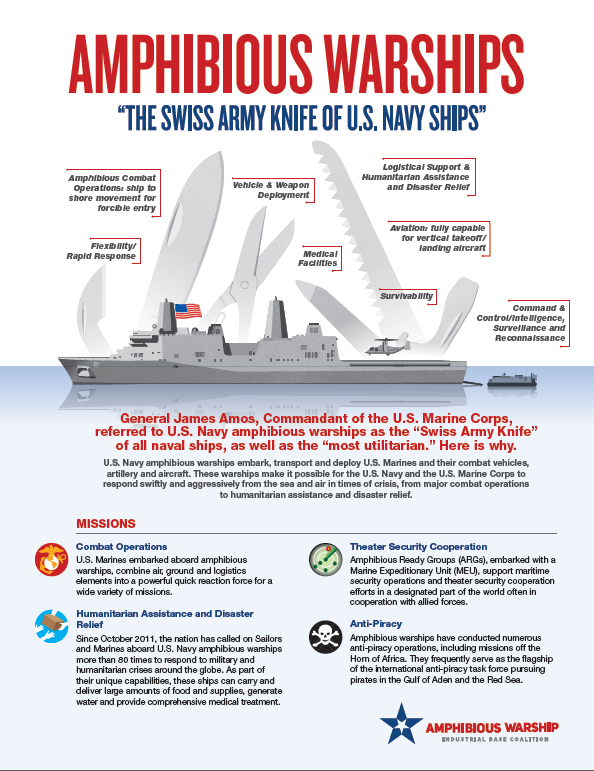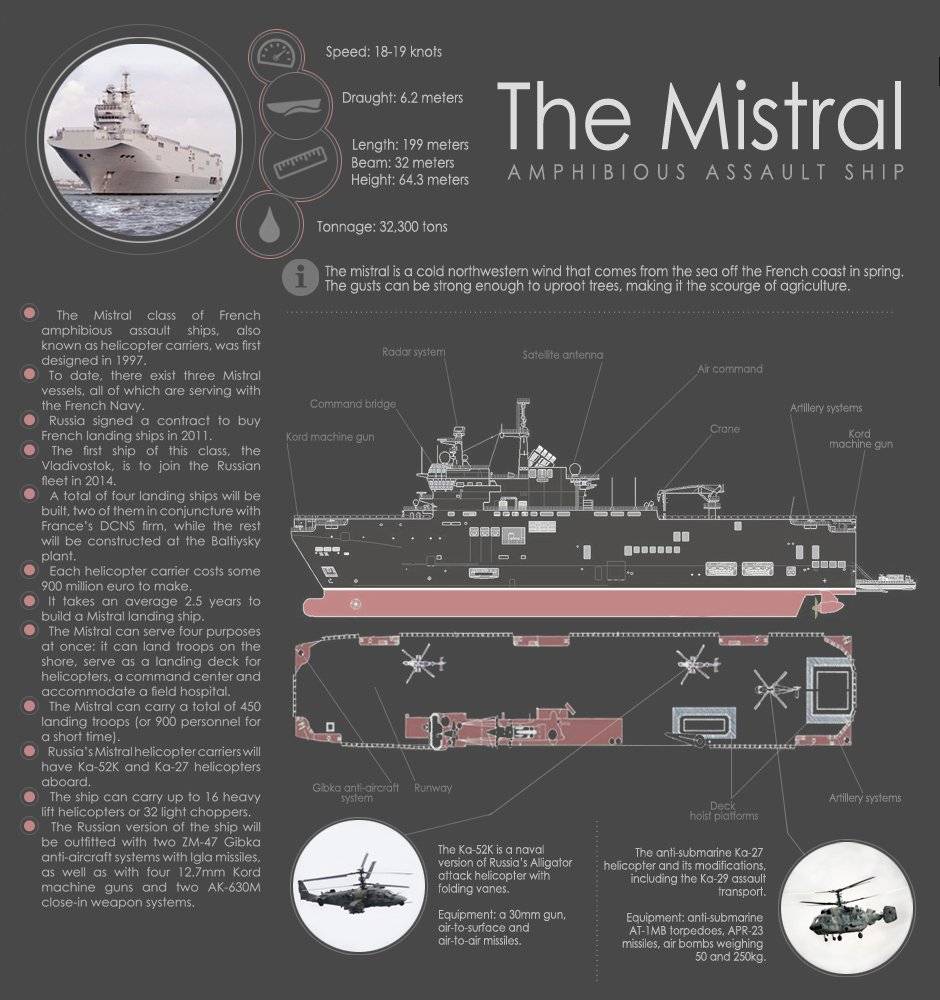Military Education
by xdtxegvfbOther Warships
Here you can check your skill.
Wasp-class amphibious assault ship

Seven Wasp Class amphibious assault ships have been built by Northrop Grumman Ship Systems (formerly Litton Ingalls Shipbuilding) of Pascagoula, Mississippi. The Wasp (LHD 1) Class is the US Navy's large-deck multipurpose amphibious assault ship. LHDs (landing helicopter deck) embark, transport, deploy, command and fully support all elements of a marine expeditionary unit (MEU) of 2,000 Marines, inserting forces ashore via helicopters, landing craft and amphibious vehicles. The WASP Class is the first specifically designed to employ air-cushion landing craft (LCACS), and to carry a squadron of Harrier II (AV-8B) STOVL (short take-off vertical landing) jets.
Wasp class aircraft
The Wasp Class carries a mix of assault helicopters, plus six to eight Harriers for close air support. A typical mix of helicopters is: 12 CH-46 Sea Knight, four CH-53E Sea Stallion; three UH-1N Huey and four AH-1W Super Cobra helicopters. USS Boxer (LHD 4) became the first ship to deploy the new four-bladed UH-1Y helicopter in October 2008. The vessels will also be able to embark the MV-22 Osprey tilt-rotor aircraft. The ship's air traffic control system supports simultaneous Harrier and helicopter operations on the ship's 819ft by 112ft flight deck. The ship has two deck edge aircraft elevators, each with a lifting capacity of 75,000lbs. The elevators fold for transit through the Panama Canal, and are the largest folding elevators in the Navy.
Wasp Class weapons
The ship is armed with two semi-active radar-guided Nato Sea Sparrow missile systems (NSSMS) for anti-air warfare protection, two rolling airframe missile (RAM) systems and two Phalanx close-in weapon-system (CIWS) mounts to counter threats from low-flying aircraft and close-in small craft. Six super-rapid blooming offboard chaff (SRBOC) decoy system launchers augment LHD 6's anti-ship missile defences. Three 25mm machine guns and four 12.7mm machine guns are also fitted.
Sensors
The Wasp is equipped with the following radars: Northrop Grumman Norden AN/SPS-67 G band primary navigation radar; ITT Gilfillan AN/SPS-48E E/F band 3D air search radar; Raytheon (Hughes) mk23 target acquisition system (TAS) for sea-skimming missiles, which can simultaneously track up to 54 targets; Northrop Grumman Norden AN/SPN-43 air search radar; Raytheon AN/SPS-49(V)9 C/D band secondary air search radar; and ITT Gilfillan AN/SPN-35A/B air traffic control radar. Northrop Grumman AN/UPX-24 interrogator friend or foe (IFF) is also fitted.
Command system
The ship's C4I systems support amphibious operations and secondary mission roles. Large screen displays and automated C4I systems are located in the combat information centre (CIC), the landing force operations centre (LFOC) and flag plot to monitor and support tactical operations. A Sperry Marine integrated bridge system (IBS), which provides computerised integrated navigation, steering and control, is to be fitted to Iwo Jima and may be retrofitted to previous vessels of the class.
Wasp Class amphibious assault capability
The ship's assault support system synchronises the simultaneous horizontal and vertical flow of troops, cargo and vehicles throughout the ship, for insertion of forces ashore via helicopters, landing craft and amphibious vehicles. Six 12,000lb-capacity cargo elevators transport material from cargo holds to staging areas for loading. Cargo to be loaded aboard landing craft within the well deck is moved via a monorail system. This system consists of 2,900ft of track in a six-track layout. The five 32ft monorail trains each have a capacity of 6,000lb and a speed of up to 600ft a minute (6.8mph). The vehicle storage area typically accommodates five M-1 tanks, 25 light armoured vehicles, eight M-198 guns, 68 military trucks (HMMVVVs), ten logistics vehicles, 12 5t trucks, two water trailers, a fuel service truck, four rough terrain forklifts and two generator trailers. These vehicles can be loaded aboard landing craft, and the majority can be rigged for transportation to the beach by helicopter. Off the beach, landing craft are launched and recovered through the very large stern gate, which opens the well deck to the sea. This well deck is 267ft long, 50ft wide and is designed specifically for the fly-in / fly-out capabilities of the air-cushioned landing craft (LCAC). The LHDs carry three LCACs. The LCAC is a high-speed landing craft capable of carrying a 60t to 75t payload. It can carry payloads, such as an M1A1 tank and 5t trucks, at a speed of more than 40kt (73.6km/h). The air cushion allows the LCAC to reach more than 70% of the world's coastline. Conventional landing craft can land at only 15% of coasts. To launch and recover conventional landing craft, the ship can ballast over 15,000t of seawater to allow these craft to float into and out of the well deck.

Other warships






